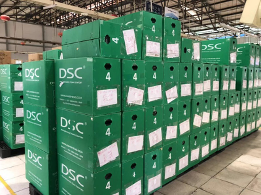Brand CasesNike Switches to Reusable Cartons to Reduce Waste, Carbon & Water Impacts
Publication Date:2021-09-16
View:6739
Many of the input materials and components delivered to Nike’s network of finished goods factories are packaged in single use cardboard cartons. For our finished goods factories in China, this generated more than 1.28 million kilograms of cardboard waste in FY19.
Nike prioritized this strategy because carton waste is one of the largest manufacturing waste streams generated that suppliers can influence directly and quickly using a simple, proven approach. Additionally, it can be implemented across all models without redesigning products and can be sustained over time as the product mix changes.
Reusable boxes are a good replacement for cardboard cartons used to ship footwear components such as sock liners, bottom units, shanks, heel clips and lamination material. There are two kinds of plastic boxes, corrugated plastic boxes and stackable plastic crates. Most factories use corrugated plastic boxes because they are most similar in size, shape, and weight to the cardboard cartons. This makes it relatively easy to integrate them into existing factory operations that are already designed for cardboard cartons. Corrugated plastic boxes cost between US$2-7 each and can be used for 12-14 roundtrip cycles. They typically pay for themselves after five shipments. Stackable crates cost between US$15-20 and can be used hundreds of times. They typically pay for themselves after 50-60 cycles. The boxes and crates are recycled when they reach the end of their useful life.

Corrugated Plastic Box
Nike has been implementing this program in China, Vietnam and Indonesia over the last two years. In China, six material and component suppliers, each serving up to ten finished goods factories, have adopted it. This prevented more than 100,000 kilograms of cardboard waste from being generated in China in FY21. Globally during the same period, this program prevented approximately 1 million kilograms of cardboard waste, reduced associated lifecycle carbon emissions by more than 1.39 million kilograms and water consumption by more than 120 million liters.
At Nike there is no finish line, in FY22 we are planning to extend it to include additional material suppliers to further reduce annual cardboard waste by another 250,000 kilograms globally.
If any divergences arise between the English and the Chinese versions of this report, please refer to the English version.
(The above content is provided by the brand, and the authenticity of the data is the responsibility of the brand)